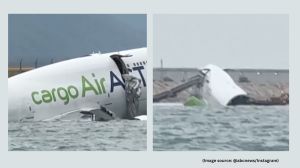Smoke on the Water
Pollution standards for ships. The IMO wants to revise the regulations it issued in 1997...

What
Pollution standards for ships. The IMO wants to revise the regulations it issued in 1997, which it now thinks were very leniently set to allow nations to ratify and make them technically achievable. For instant, the sulphur content for ship fuel has been set at 4.5 percent, noticeably above the 3 percent sulfur content of fuel generally available worldwide.
why
Unnoticed—ships are after all not a daily sight for most people—maritime vessels have emerged as leading sources of sulfur oxides, particulate matter and nitrogen oxides. Expert reckon a ship can emit as much exhaust per day as 12,000 cars. The emissions have been linked to global warming, respiratory illnesses and premature death.
How
The London-based IMO, with its 166 member nations, develops international stands for ship safety, security, vessel design, crew training and environmental protection. It can revise the pollution standards that it set in 1997 and get most countries to comply with new norms.
The 6th What Next
The IMO may adopt new standards by as early as July next year. The plan is to reduce sooty diesel emissions from cargo ships by more than 50 percent. There may also be a call for a reduction of up to 30 percent in nitrogen oxides in ships built after 2000. The IMO will also consider the idea of getting ships built before 2000 to retrofit their engines with air pollution controls such as scrubbers and catalytic converters. The only hitch will be in the IMO getting its members to quickly accept the new standards. The regulations formulated in 1997 took eight years to be ratified by the member nations and went into effect only in May 2005.





- 01
- 02
- 03
- 04
- 05


























